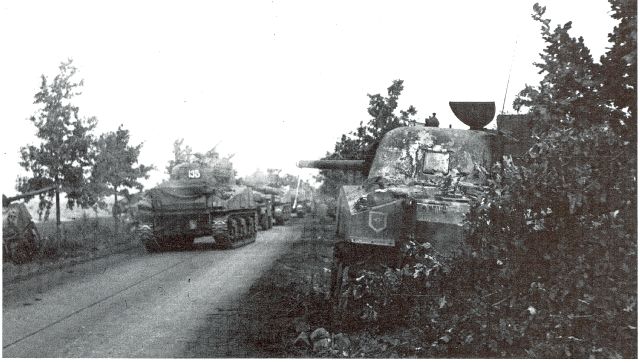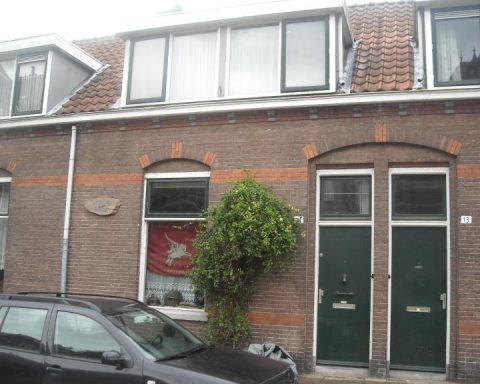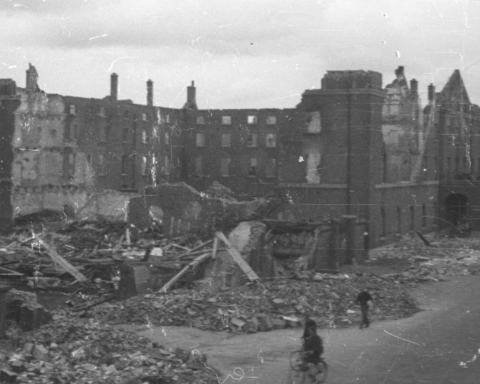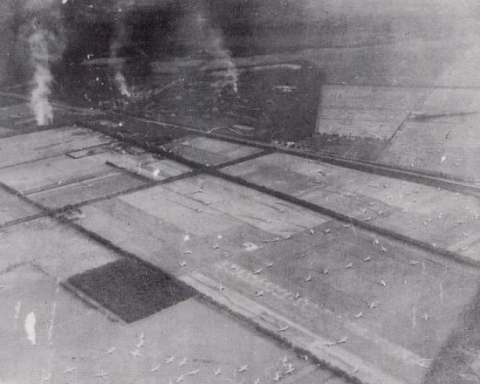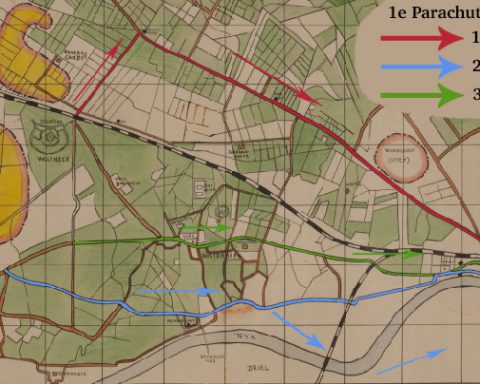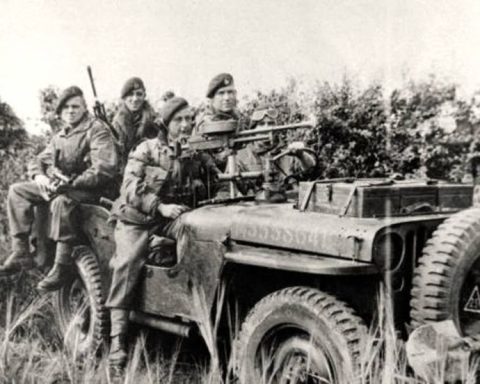On Tuesday afternoon, September 19, around two o’clock in Arnhem, drive over the Rhine bridge to relieve the troops of the British 1st Airborne Division. That was the goal of the ground forces of the British XXX Corps under General Harrocks.
At the start of Operation Market Garden, XXX Corps was stationed near the Belgian-Dutch border. The Irish Guards led by Joe Vandeleur would kick things off.
Prior to the advance of the tanks and infantry of XXX Corps, from 2 p.m. on Sunday, September 17, the German positions were fired upon by 350 guns of the Royal Artillery. At 2:35 p.m. the order to move on was given.
The leading British tanks had only traveled a few hundred meters before the German anti-tank guns opened fire. In no time, nine British tanks were on fire. Colonel Vandeleur of the Irish Guards called in the help of the RAF to deal with the German resistance.
After fighter planes had destroyed the German positions, things continued. Carefully and slowly. The destroyed tanks also caused delays because they blocked the road.
In his book about the Battle of Arnhem, historian Antony Beevor describes an anecdote that took place near Eindhoven during the advance of September 17.
Sergeant Cowan spotted a camouflaged self-propelled gun and took it out with a 17-pounder from his Firefly tank. The gun commander surrendered, and Cowan had him jump onto the back of his tank. He then continued his advance, but found his prisoner tapping him on the shoulder and pointing to another cannon, which Cowan had not seen. This was also destroyed.
“And this particular combination of an ex-commander of an enemy gun and a sergeant of the Irish Guards then tackled a third gun.”
The German spoke reasonable English and was delighted with the Firefly’s shooting. His explanation for this bizarre behavior was that he was a professional soldier and could not tolerate anyone using the wrong tactics, which he said Cowan did.
Because the German resistance was much more vicious than expected, the ground troops only arrived in Valkenswaard on the evening of September 17. Valkenswaard was halfway between the starting position and Eindhoven. XXX Corps was immediately far behind schedule. In the original planning, the ground troops of XXX Corps should have liberated Eindhoven that afternoon.
After the war, there was a lot of criticism of Horrocks’ decision to stop at Valkenswaard that day. Horrocks defended himself by stating that it is a commander’s job to ensure that his men get rest. According to Horrocks, the bridge at Son first had to be repaired before they could advance.
This is nonsense.
Son is located north of Eindhoven, more than 15 kilometers from where Horrocks stopped. The 101st Airborne Division had been dropped north of Eindhoven. The Germans had blown up the bridge at Son in front of them. The engineers of the 101st Airborne were unable to repair the bridge with their limited resources. The engineering department of XXX Corps from Horrocks was necessary to build a Bailey bridge over the Wilhelmina Canal at Son.
But because XXX Corps had stopped well before the bridge at Son, this could not be started.
At the end of the first day of Operation Market Garden it was already clear that the British at Arnhem would have to wait longer than 48 hours before the ground troops would reach the Rhine…

